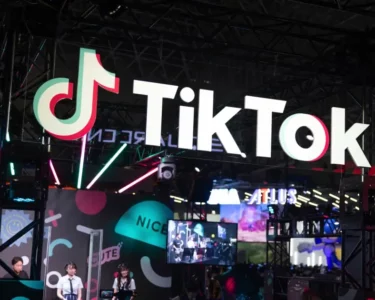In a recent investigation by BBC Three, TikTok has come under scrutiny for its role in driving online frenzies that, in turn, encourage anti-social behavior in the real world. Former employees have revealed that the platform has been hesitant to address these issues due to concerns that doing so might impede the app’s rapid growth.
These frenzies, characterized by a disproportionate surge of engagement around specific topics, have been observed through interviews with ex-staffers, app users, and BBC’s analysis of broader social media data. Unfortunately, these frenzies have led to disruptions and disorder in everyday life.
One of the key findings of the BBC’s investigation is that TikTok’s algorithm and design expose users to content they wouldn’t typically encounter. This often motivates them to create unusual videos themselves, contributing to the amplification of these frenzies.
TikTok has faced criticism in the past for distancing itself from real-world incidents, such as the threatened looting of London’s Oxford Street. However, the BBC has identified four recent episodes where TikTok’s influence was connected to harmful behavior:
- False Murder Accusations in Idaho, USA: An online obsession with a murder case led to innocent people being falsely accused.
- Interference in a Missing Persons Case in Lancashire, UK: TikTok played a role in interfering with the police investigation of a missing person.
- School Protests and Vandalism in the UK: School protests involving vandalism spread across the UK, driven by TikTok.
- Riots in France: TikTok fueled riots in France, spreading with unusual intensity and to unexpected locations.
Former TikTok employees have likened these frenzies to “wildfires,” emphasizing their danger, especially considering the app’s young and impressionable audience.
A spokesperson for TikTok responded to these allegations, stating that their “algorithm brings together communities while prioritizing safety.” They claimed to recommend various types of content to interrupt repetitive patterns, remove “harmful misinformation,” and reduce the reach of videos with unverified information.
The investigation also sheds light on how TikTok’s design and algorithms contribute to these frenzies. TikTok’s “For You” page, which offers content selected by an algorithm, exposes users to a wide range of content. Depending on engagement, the algorithm can rapidly amplify a video’s reach, unlike many other social media platforms.
Participation is a central focus for TikTok, as revealed in internal documents. The platform aims to keep users actively invested, which can be alarming for individuals who find themselves caught up in the chaos.
For some, the lure of TikTok’s frenzies can be irresistible. Users like Olivia found themselves flying across the country to immerse themselves in real-world events that had captured TikTok’s attention. The high engagement on TikTok, especially for topics like murder cases, can encourage users to create their own content.
However, this participation is not without consequences. Innocent individuals like Jack Showalter were falsely accused due to the frenzy surrounding a murder case. The internet sleuth videos created victims beyond the original tragedy.
The investigation also highlights how TikTok can draw in individuals who have never posted such content before. When Nicola Bulley went missing, TikTok saw an explosion of speculation and false information. This misinformation spread more rapidly on TikTok than on other social media platforms, and some users were even encouraged to continue posting it.
TikTok’s influence extends to school protests, where it can quickly escalate tensions and actions. A protest in Merseyside over school dress codes went viral on TikTok, inspiring similar protests in over 100 schools within a week. Some of these protests turned violent.
Furthermore, TikTok’s algorithm can recommend content that encourages rebellion against school rules and even offensive behavior towards teachers. The platform’s impact on students and schools is a growing concern.
In France, TikTok played a significant role in amplifying the riots that erupted following the shooting of Nahel M by a police officer. Although the riots had genuine causes, TikTok accelerated their spread and intensification. Videos on TikTok showcasing acts of destruction became more extreme as the riots continued, influencing others to follow suit.
TikTok’s unintended consequences of fueling real-world disruption and chaos are a matter of growing concern. The platform’s algorithm-driven amplification of content and the participation it encourages can have detrimental effects, especially when it comes to sensitive topics and social disturbances. As TikTok continues to shape online and real-world behavior, there is a pressing need to address these issues and prioritize safety and responsibility on the platform.





